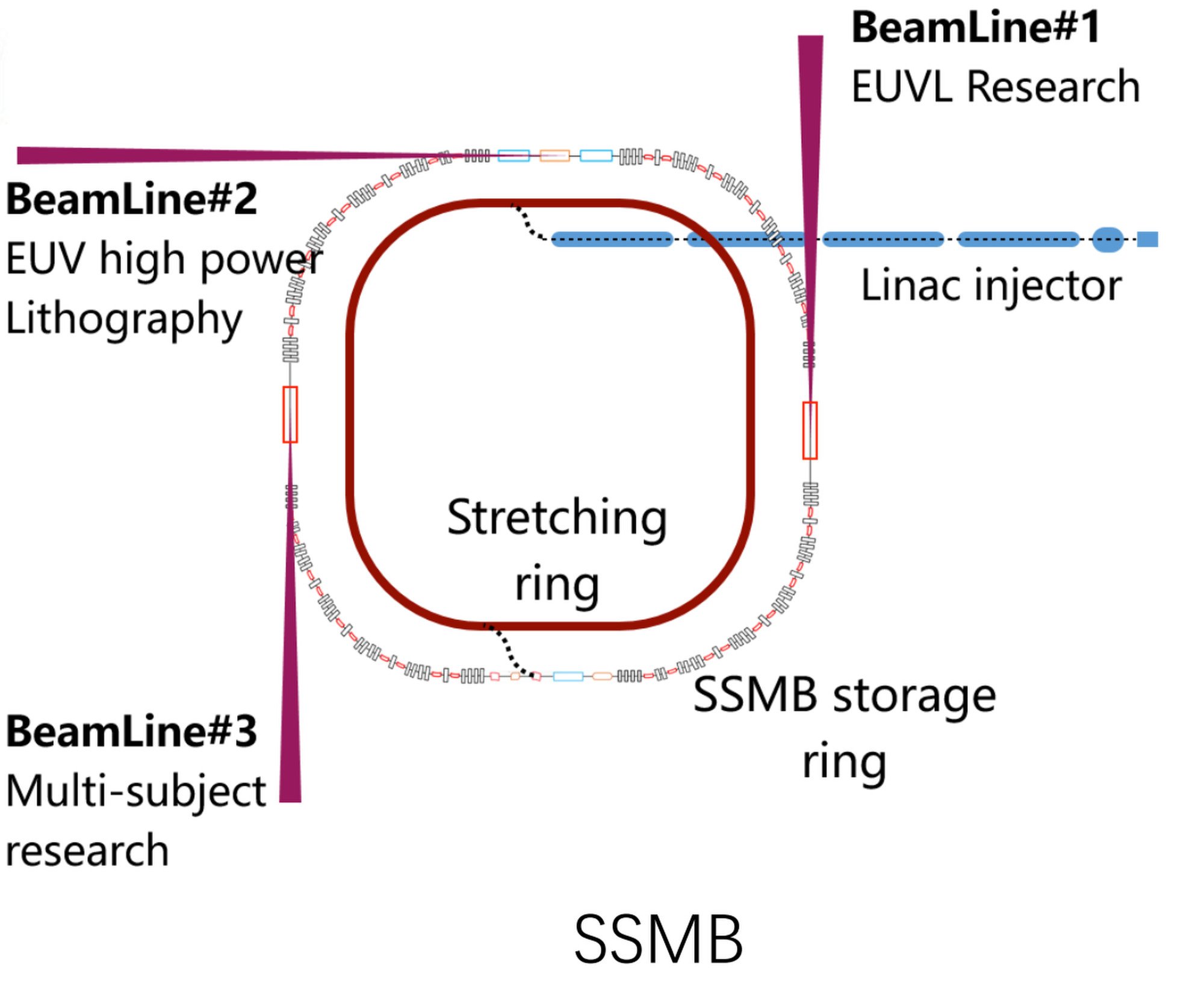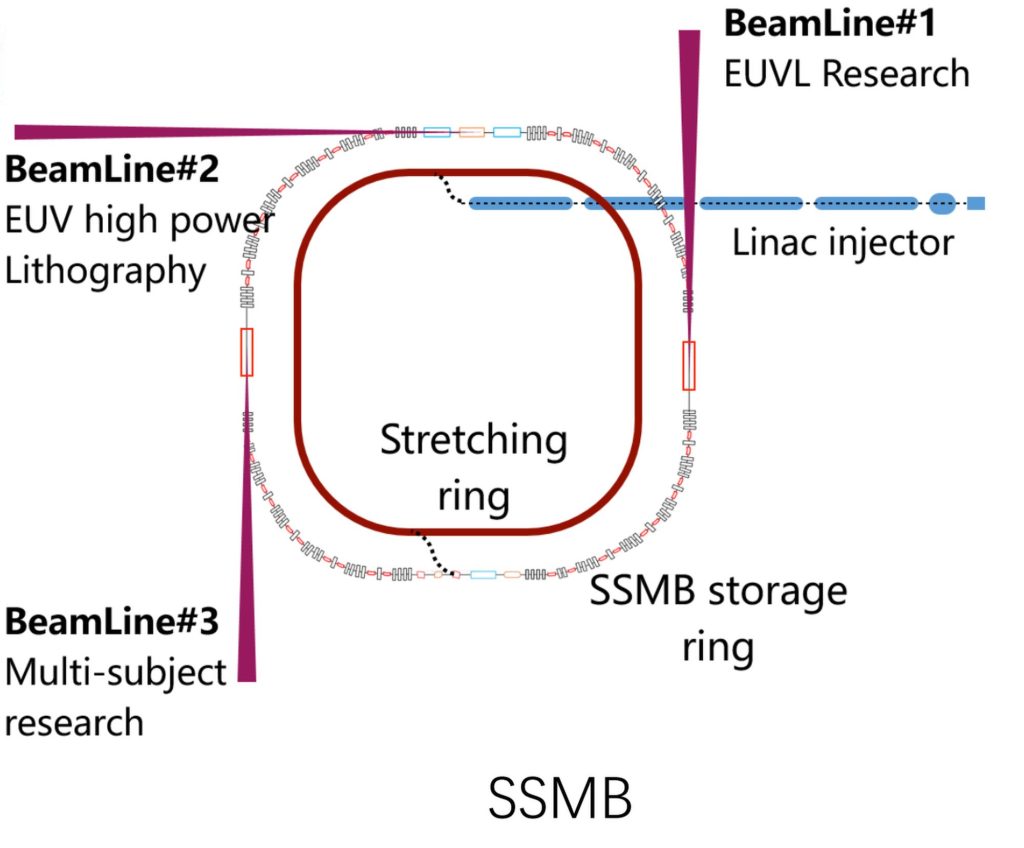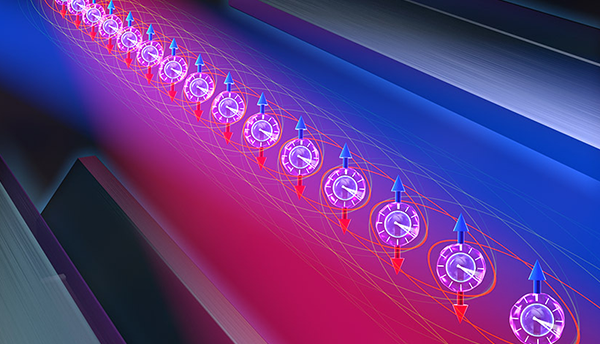
The plan is to build a particle accelerator with a circumference of between 100-150 metres (328-492 feet).
A site has not yet been chosen but the intention is to have the accelerator serve multiple litho machines acting as a foundry hub..
The science behind the plan is the Stanford-developed steady-state microbunching (SSMB) approach which uses the energy released by charged particles during acceleration to act as a light source.
“The main challenge lies in guiding the distribution of electrons within the storage ring of the accelerator, causing them to achieve collective synchronous radiation,” according to Stanford Prof Zhao Wu, who originally proposed the technology in 2010, “the device could produce high-quality radiations from terahertz waves at a wavelength of 0.3mm to EUV waves at wavelengths of 13.5nm. Unlike free-electron lasers, which produce pulsed lasers with high peak power, SSMB sources produce continuous light with high average power.”
Last year, Tsinghua University built an SSMB prototype. “An SSMB-EUV light source has been designed at THU, with designed EUV power higher than 1kW, and some key technologies are nearly ready,” said a member of the team which built it, Professor Pan Zhilong.







